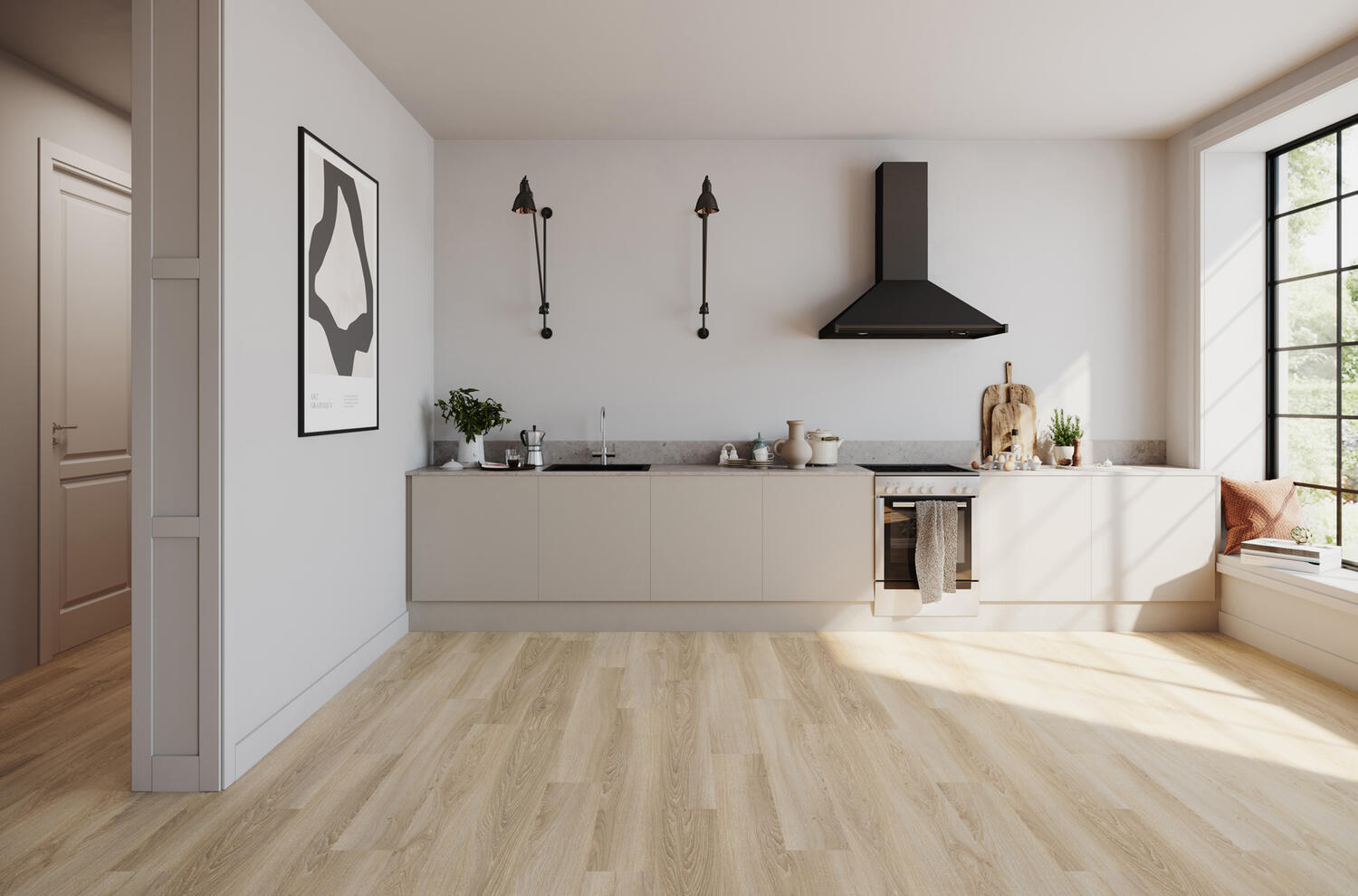When choosing the ideal flooring for your home, the options can be overwhelming. Among the myriad choices available, bamboo flooring vs. laminate flooring has gained popularity for its unique characteristics and aesthetic appeal. This comprehensive guide will delve into the key factors differentiating bamboo and laminate flooring, helping you make an informed decision that aligns with your preferences, lifestyle, and budget.
1. Material Composition
Bamboo Flooring:

- Natural Material: Bamboo flooring is crafted from the fast-growing bamboo plant. This makes it an eco-friendly option, as bamboo is a highly renewable resource.
- Strand-Woven or Solid Planks: Bamboo flooring comes in two main types – strand-woven and solid. Strand-woven bamboo is more durable due to its unique manufacturing process that compresses the fibers. Solid bamboo consists of individual bamboo strips laminated together.
Laminate Flooring:

- Synthetic Composition: Laminate flooring is a synthetic product composed of multiple layers. The core layer is usually made of high-density fiberboard (HDF) or medium-density fiberboard (MDF), topped with a high-resolution image of wood or stone, and a protective wear layer made of resin.
2. Aesthetic Appeal
Bamboo Flooring:
- Natural Elegance: Bamboo flooring imparts a warm and natural look to spaces. The natural grain patterns and color variations contribute to its aesthetic appeal.
- Color Options: Available in various hues, from light blondes to darker shades, providing homeowners with versatile options to match their interior design.
Laminate Flooring:
- Versatile Replication: Laminate flooring excels in replicating the look of hardwood, stone, or tile. Advanced printing technologies allow for realistic patterns and textures.
- Wider Range of Styles: Laminate offers a broader spectrum of styles and patterns, making it suitable for homeowners seeking diverse design options.
3. Durability and Resistance
Bamboo Flooring:
- Hardness: Bamboo is known for its hardness, comparable to hardwoods like oak. However, the durability can vary depending on the type – strand-woven bamboo tends to be more robust.
- Moisture Sensitivity: Bamboo is sensitive to moisture, and excessive exposure can lead to warping or damage. It is advisable to keep bamboo flooring dry.
Laminate Flooring:
- Wear Layer: Laminate flooring’s wear layer, typically made of aluminum oxide, provides excellent resistance against scratches, stains, and fading.
- Moisture Resistance: Laminate is generally more resistant to moisture than bamboo. However, prolonged exposure to water can still lead to damage, especially at the seams.
4. Installation Process:
Bamboo Flooring:
- Installation Options: Bamboo flooring can be installed using various methods, including nail-down, glue-down, or floating installations.
- Professional Installation: While some homeowners may attempt DIY installations, professional installation is recommended for optimal results.
Laminate Flooring:
- Click-and-Lock Mechanism: Laminate often features a click-and-lock installation system, making it a popular choice for DIY projects.
- Floating Installation: Laminate is commonly installed as a floating floor, with planks interlocking and resting over a foam underlayment.
5. Maintenance and Care
Bamboo Flooring:
- Gentle Cleaning: Regular sweeping and damp mopping are suitable for bamboo floors. It is essential to avoid excessive moisture and use gentle cleaning solutions.
- Avoid Harsh Chemicals: Harsh cleaning agents can damage the finish, so using products specifically designed for bamboo is recommended.
Laminate Flooring:
- Easy Maintenance: Laminate is known for its easy maintenance. Regular sweeping and occasional damp mopping are usually sufficient.
- Avoid Excess Water: While more resistant to moisture than bamboo, laminate floors should still be protected from prolonged exposure to water.
6. Cost Considerations
Bamboo Flooring:
- Cost Range: Bamboo flooring is often considered more affordable than hardwood but can be pricier than some laminate options.
- Varied Pricing: Prices vary based on the type of bamboo (strand-woven or solid) and the brand.
Laminate Flooring:
- Budget-Friendly: Laminate flooring is generally more budget-friendly than bamboo and many other flooring options.
- Affordable Range: With a wide range of styles and price points, laminate caters to various budgets.
7. Environmental Impact
Bamboo Flooring:
- Eco-Friendly: Bamboo is highly renewable, with a rapid growth cycle compared to traditional hardwood trees. This makes bamboo flooring an eco-friendly option.
- Harvesting Practices: Opt for bamboo sourced from responsibly managed forests to ensure sustainable harvesting practices.
Laminate Flooring:
- Composite Material: Laminate’s core is made from composite wood products, which may not be as environmentally friendly as bamboo.
- Recyclability: Some laminate products are recyclable, but disposal practices can vary.
Conclusion: Choosing the Right Flooring for Your Space
In the bamboo flooring vs. laminate flooring, the ideal choice depends on your priorities and the specific requirements of your space. Bamboo flooring brings a natural and elegant touch with eco-friendly appeal, while laminate offers versatile styles, easy maintenance, and budget-friendly options.
Consider factors such as your lifestyle, budget constraints, and aesthetic preferences when deciding. Whether you lean towards the warmth of bamboo or the versatility of laminate, both flooring options offer distinct advantages for homeowners seeking a durable and visually appealing foundation for their living spaces.






One thought on “Bamboo Flooring vs. Laminate: A Comprehensive Guide to Which One Should You Buy?”